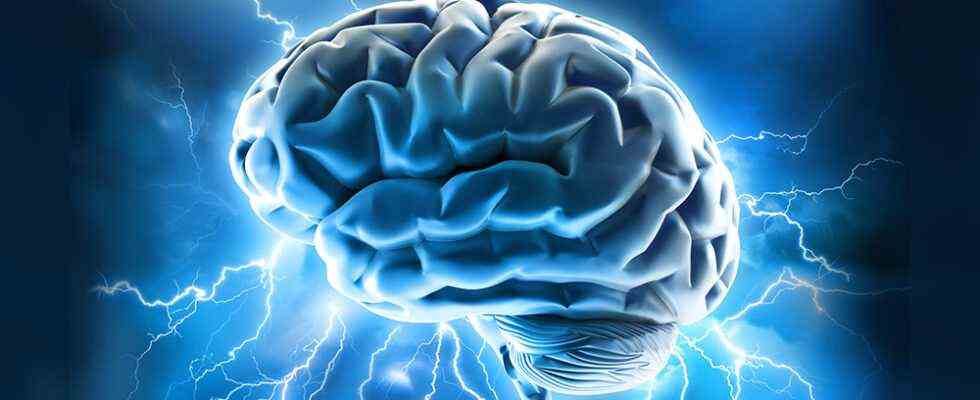High base load: even during sleep or in a coma, our brain consumes enormous amounts of energy – but why? Researchers may now have found an answer to this riddle. According to this, the tiny vesicles in the synapses are to blame, which bring messenger substances to the neighboring cell when excited. These vesicles are already filled at rest, but they are constantly losing protons and thus energy through their membranes, as the scientists discovered.
Our brain is the most energy-hungry organ in the body: Although it only makes up a good two percent of our body weight, it consumes around 20 percent of our energy. Most of it is required for the active communication of nerve cells via electrical and chemical signals. But strangely enough, the energy requirement of our thinking organ drops only slightly, even in complete rest or in a coma. This is one of the reasons why the brain reacts so sensitively to even brief interruptions in the blood supply.
Closer look at the synapse
But what does the resting brain need this energy for? Camila Pulido and Timothy Ryan from Weill Cornell Medical College in New York had it for that Synapses suspected – the switching points between the individual nerve cells at which electrical signals are translated into chemical messengers and transported through the synaptic gap between the cells.
The brain cell packs these neurotransmitters in tiny vesicles, which then remain “in stock” until an electrical impulse triggers their release. It is known from previous studies that packing and refilling these vesicles consumes a lot of energy and therefore makes up a large proportion of the total brain metabolism in the active brain. Pulido and Ryan have now examined in more detail for the first time what this looks like with the synaptic vesicles resting in the waiting position.
To do this, the team cultivated brain cells and synapses in the laboratory and examined their resting metabolism with the help of fluorescent markers and targeted blocking of the energy supply in the form of ATP or individual process steps.
Proton leak in the vesicle membrane
The experiments revealed: Even if the synapses are not active, the vesicles stored there actually need a constant supply of chemical energy in the form of the molecule adenosine triphosphate (ATP). As the researchers found, the enzyme V-ATPase is not only active when the vesicles are filled with neurotransmitters, but also when the vesicles are packed and nothing really happens. But why?
Closer analyzes revealed that the membranes of the tiny neurotransmitter-filled vesicles are apparently not completely “tight”: They are constantly losing protons to their surroundings. “This loss then has to be compensated for by the V-ATPase, which constantly consumes ATP for this,” explains the team. The cause of this leak is a transporter molecule in the vesicle membrane, which normally transports the messenger substances into the vesicles, but apparently easily lets protons through to the outside.
High base load even at rest
“Our data show that this constant proton outflow is responsible for around 44 percent of the ATP consumption of a dormant synapse,” report Pulido and Ryan. “In view of the enormous number of such nerve endings in the brain and the fact that this energy consumption is constant, this means a substantial base load for the brain.” According to estimates, there are hundreds of trillions of synapses in our brain that produce ATP and thus energy around the clock consume.
“Our study provides a convincing explanation for why our brain has a much higher basal metabolic rate than other tissues, even at rest,” write the two researchers. “At the same time, it also explains why these nerve endings are so susceptible to supply bottlenecks.”
Help against brain damage?
Knowledge of the process that is responsible for the high synaptic energy consumption could now show ways to better protect the brain from damage caused by an interrupted blood supply. Pulido and Ryan have already tried out how this could work, at least in tissue culture: They blocked the proton-leaking transporter molecule and then tested how well the synapses still functioned when the energy supply was cut off.
It turned out that while control synapses failed after just a few nerve impulses, the nerve endings with a blocked transporter lasted 50 percent longer. Although they could not fill new vesicles because of the deactivated transporter, the already packed ones remained ready for use for a longer time, as the team found out. If such a strategy also works in the living organism, this could help save valuable time in the event of a stroke or cardiac arrest. (Science Advances, 2021; doi: 10.1126 / sciadv.abi9027)
Source: Weill Cornell Medicine

